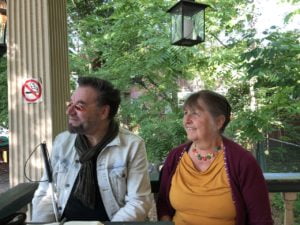Gatineau suddenly turns green.
Congratulations Gatineau earthlings!
Regarding heritage. LEED = do not demolish unless …
Historical preservation is and has always been a worthy cause. Then came sustainability, and while it was also a worthy cause, conflicts erupted. The Conservatives were concerned about the appearance of items such as solar panels and new “green” equipment. Recently, however, both parties have realized that they have more in common than they thought. The two are concerned with historic buildings and both recognize that it is more environmentally friendly to renovate/restore old buildings rather than demolish and build new ones.
This is proof that bulldozing our heritage buildings to replace them with ultra-green structures is not necessary, as I stated in a recent article. It is a proof of good faith that we can work to green and preserve the greatest integrity of the historic structures that we have – in all corners of the world – with a little ingenuity, effort and extraordinary thinking. It reassures us that just because something hasn’t been done before doesn’t mean we can’t do it by restoring or renovating.
Our built environment is full of significant historic buildings that are in desperate need of upgrades. Access to this opportunity would save countless tonnes of carbon emissions each year. If a building older than half a millennium can reach LEED, it seems that our work is cut out for us, it certainly seems much less intimidating to renovate, and that’s for sure. ”
It is a common saying in the green building movement that “the greenest building is one that is not built”. This ideal may be great, but with the growing demand in many regions of Quebec – and around the world – for buildings, it is often overlooked. Meanwhile, millions of buildings already exist but are not being used to their full potential, despite their historical character and their environmental characteristics. Built for a purpose that no longer exists or has changed and often lags behind by current performance standards, these buildings are good candidates for rehabilitation.
In the midst of this activity, a new saying goes around: “The greenest building is one that is already built.” This article examines this claim, examining the most common standards of historic preservation and some of the challenges and opportunities that homeowners, designers and contractors face when handling historic properties. Several case studies address common areas of concern, including energy efficiency, and architectonic recommendations.
Old and historic buildings are often environmentally friendly and offer opportunities to become greener. The sidebar provides recommendations to teams working on historic rehabilitation projects. It is a selective and not exhaustive list.
My dear pedagogical architects, it’s up to you to educate us.
Architecturally yours,
Micheline Lemieux, President of the APA-AHA
Luc L. Paquette, member of the Board and of the architecture committee



Leave a comment